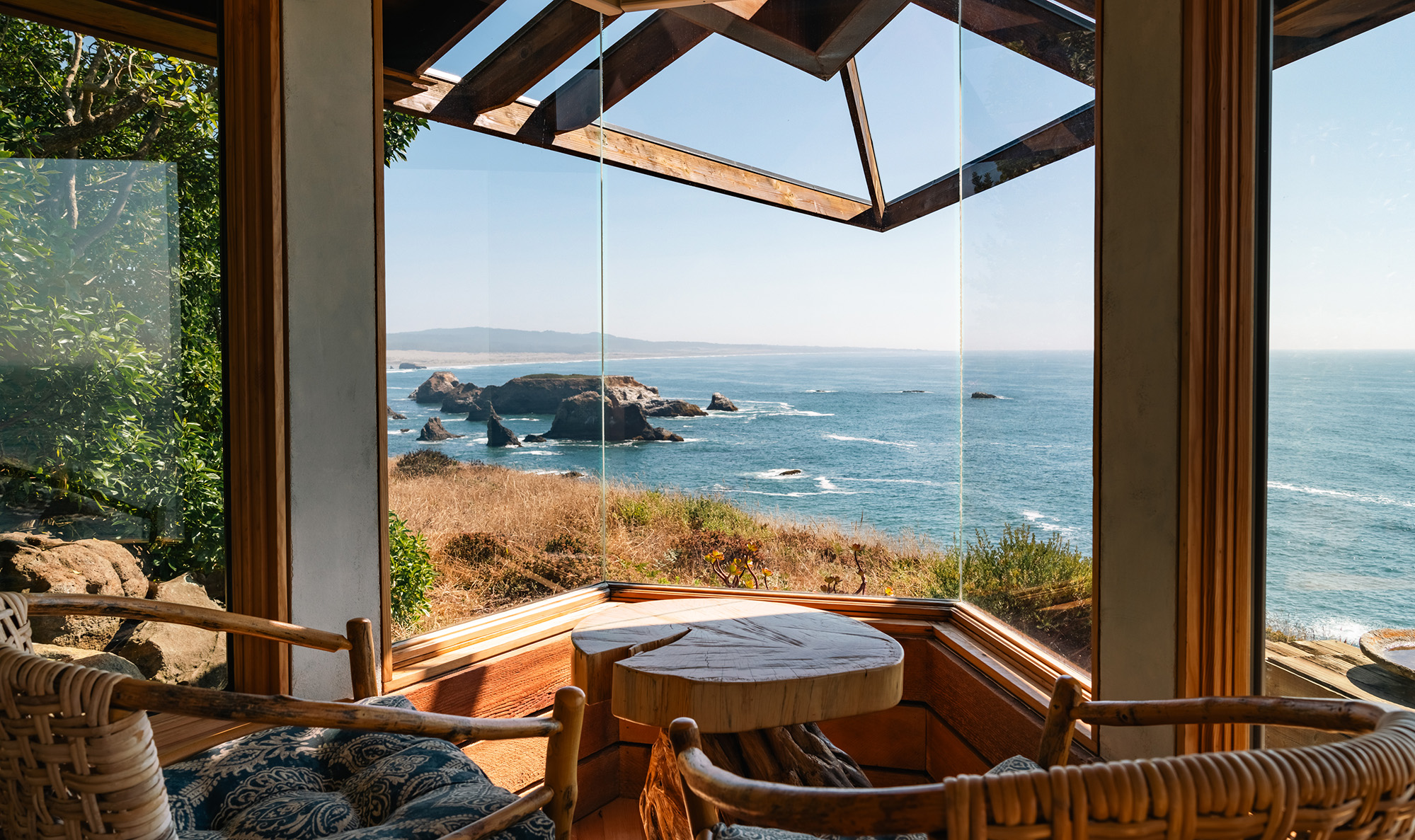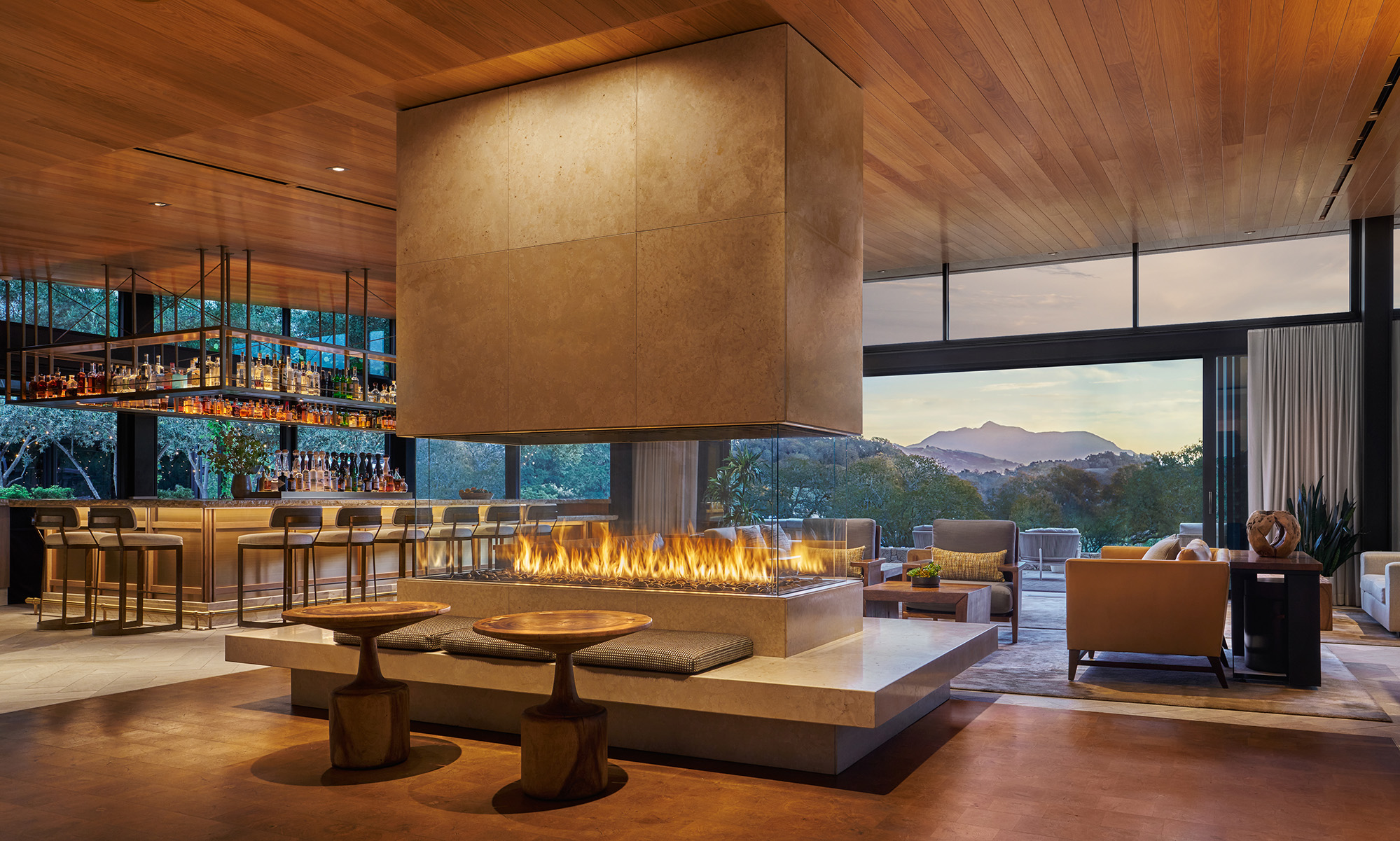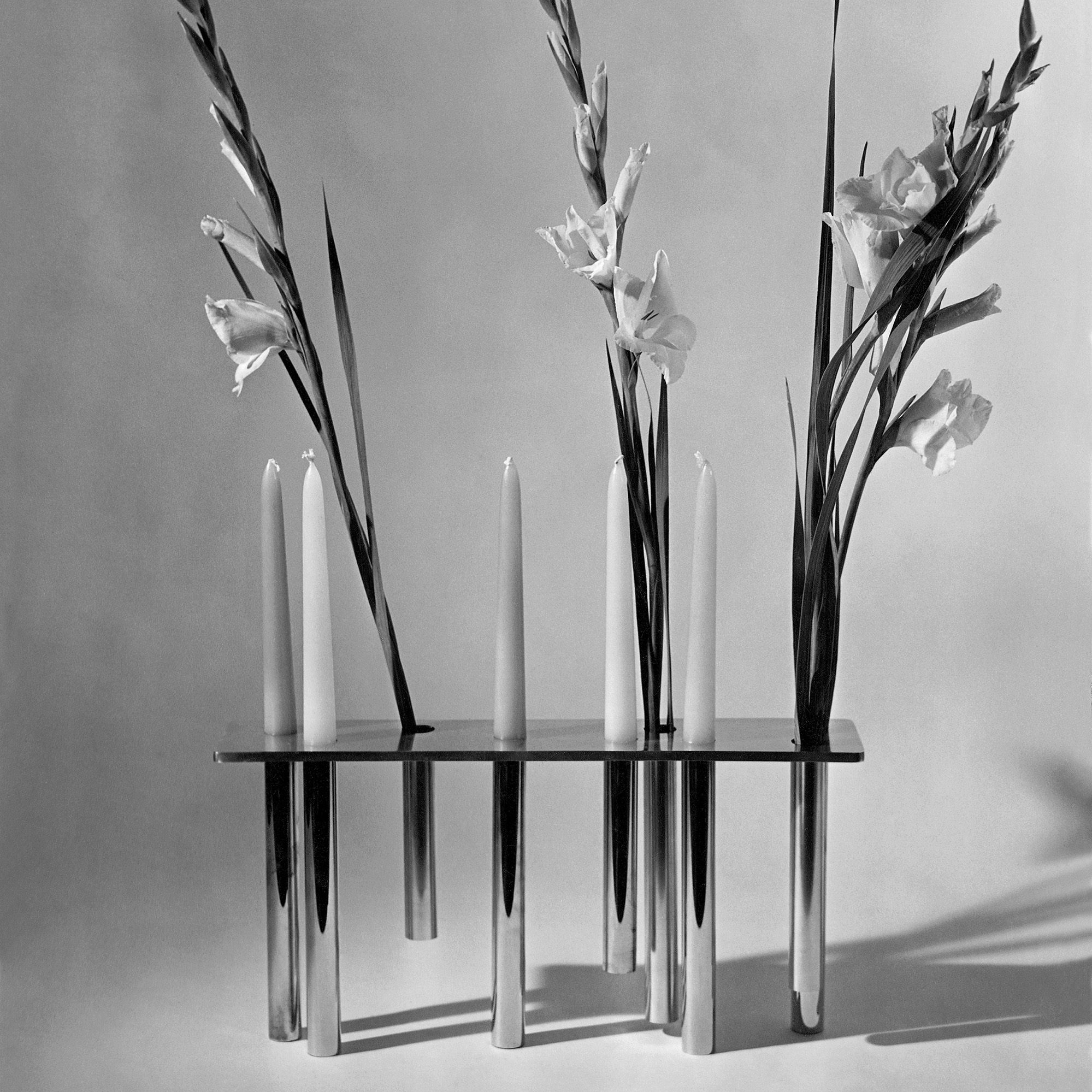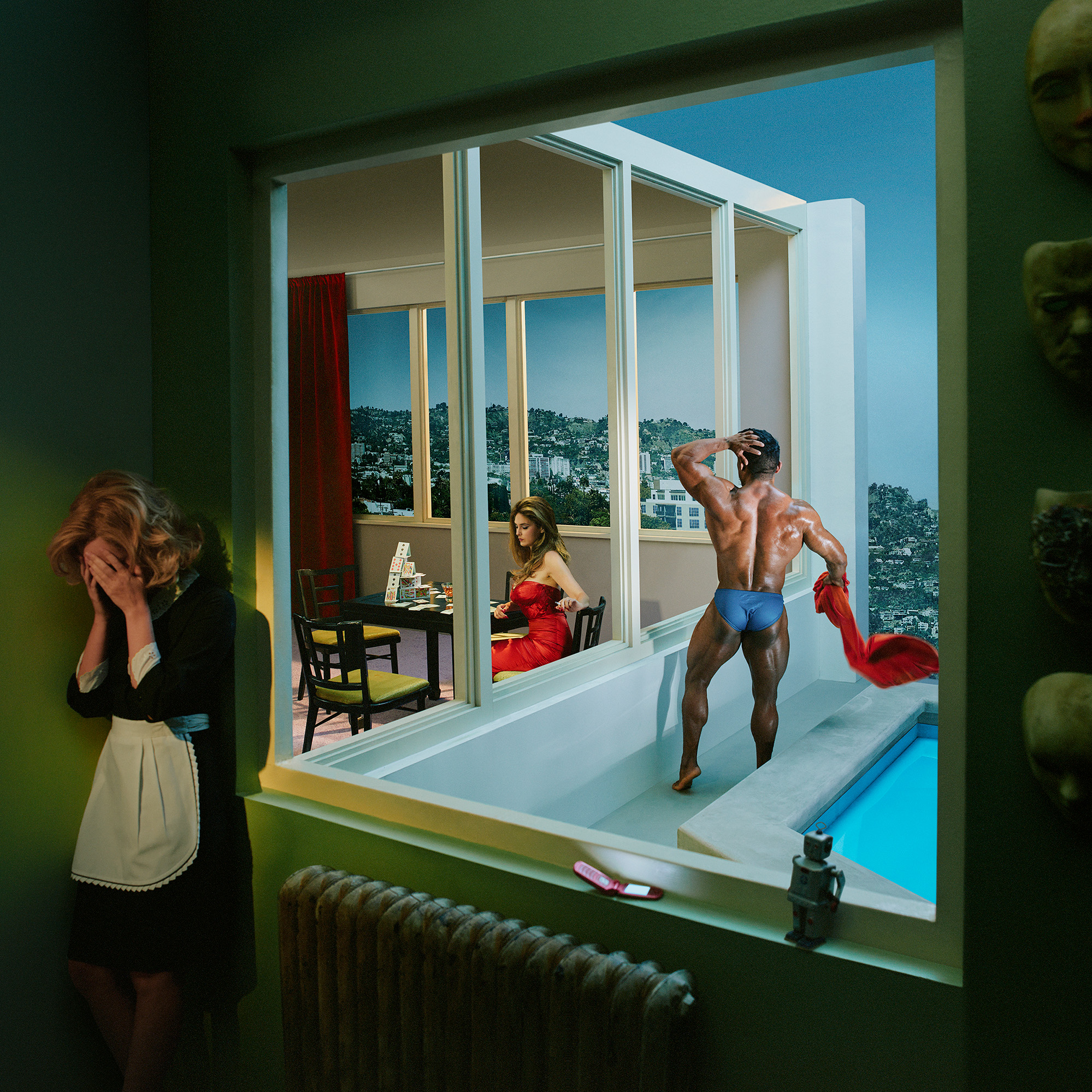Mark Your Calendars: The Grand Tourist 2026 Guide to Art and Design Fairs
A great design or art fair sets the tone for the year, defines the conversations, and points to where taste is headed. These are the fairs defining 2026. Save the dates.

You’re reading The Grand Tourist Curator, our weekly newsletter with the latest handpicked news and insights from the worlds of art, design, style, food, and travel. Sign up here to get The Curator delivered directly to your inbox.
I’ve never stayed at Esalen or the Post Ranch Inn, but for years I’ve imagined them both as these bohemian utopias where people—even the most jaded New Yorkers—can commingle with nature, peace out, and achieve that elusive California consciousness. I recently found myself in Marin County with a few free days to unwind, and I was hoping to feel a little of that hippie nirvana. But after hearing of too many Silicon Valley tech titans trying to find their souls in Big Sur, I decided to look elsewhere. I headed north to California’s Lost Coast, a rugged and remote region about 225 miles north of San Francisco. I hadn’t been in the area for over 20 years, and the previous trip wasn’t one I looked back fondly on—it was the first (and last) time I ever went camping.
This time I was lucky enough to stay at the Inn at Newport Ranch, a small B&B turned luxury resort opened in 2016 by Will Jackson, a retired Wall Street investment manager who also owns Shelburne Farms, a 1,400-acre sustainable farm in Vermont. (When he’s in town, the 96-year-old Jackson is known to still drive around the property in a UTV, chainsaw in hand, looking for any fallen redwood trees.) Just a 30-minute drive north of Mendocino, the inn is located on a 2,200-acre cattle ranch, where the Pacific Ocean meets an old-growth redwood forest. The setting is, in a word, spectacular, and guests are encouraged to explore the property by hiking the trails, going out on horseback, or riding in a UTV with an expert guide. Guests can also opt to take in the scenery from the main sitting room next to a huge fireplace, watching the shifting weather roll in.
The inn has 10 guest rooms and suites, all of which have a NorCal aesthetic: lots of gnarled wood and timber, with floor-to-ceiling windows and hot tubs on the deck for optimum indoor-outdoor living. “One of my clients said it’s like Big Sur 50 years ago,” says Otis Brown, who was piloting me around the property in a UTV, pointing out all sorts of birds soaring above, including blue herons and peregrine falcons. Below us, a group of sea lions sunbathed on the rocks. Whales are also a common sight. The wildlife population certainly outnumbers the guests, so most of the time you feel like you have the whole place to yourself. I didn’t really understand how vast the ranch was until Brown took me on a ride through several different microclimates, from wildflower meadows to a dark, misty redwood forest. He pointed out various medicinal plants as well as things like sorrel, nutmeg, and nettles, all used in the kitchen at the inn. Brown also leads a foraging excursion where guests can collect their own mushrooms. All of this makes for an impressive bounty for Jack Herron, the property’s chef, who had arrived from Charlie Palmer’s Dry Creek Kitchen restaurant in Sonoma County only a few days before my visit. The evening I was there, Herron prepared a dinner of local albacore with wild fennel pollen aioli, California Dungeness crab with citrus, and roast chicken with maitake mushrooms. He sat with me, detailing each ingredient’s source, from the Black Angus cattle roaming the fields to the sea urchin and wild salmon from Princess Seafood, a two-woman fishing outfit out of nearby Fort Bragg.
The next morning, I didn’t have time to visit the spa, but there were plenty of groovy treatments to choose from, including a drum journey with medicine songs and a therapy session with tuning forks. Typically, I’d roll my eyes at such new-age mumbo jumbo, but in this setting it felt totally apt. Instead, I enjoyed a leisurely breakfast of fresh bread with fruit compote, local bacon, and a fluffy egg soufflé whipped with miso. Carole King and Steely Dan were playing in the background— the ideal ’70s soundtrack— as the sun broke through the morning fog. I had found my nirvana. I highly suggest you do the same at this undiscovered gem.
Next I headed to Mendocino, a quaint seaside town filled with clapboard cottages and wild gardens. At the farmers market, vendors were selling local honey and vegetables while a trio of grizzled musicians played folk songs. The area, long populated with loggers, fishermen, and countercultural types, has seen an influx of younger people moving in and opening businesses since the pandemic. Ritual, a tiny shop run by a recent San Francisco transplant, sells vintage jewelry and Asian and Southwestern art, with an attic upstairs for “gatherings.” Nearby, Folklore is a charming spot offering ceramics, woven baskets, and quilted madras-like jackets made in India. Valerie is a gallery and events space housed in a cavernous barn strung with Noguchi-style lanterns, and the shop sells vintage Levi’s, overdyed hoodies, a custom line of fragrances, and used records.
From here I headed into Point Arena, a funky little surfing town, and dined at Gama, which serves excellent “coastal izakaya” cuisine that includes karaage (fried chicken) with house yuzu aioli, and gindara kama, a local grilled black-cod collar that I loved. Before leaving town, I stopped by Point Arena Tileworks, an open-air studio on the outskirts of town that had all sorts of quirky tiles, many for just a few dollars apiece. I was tempted to visit the Sea Ranch because I was curious about the renovation of the lodge—on my last visit, I loved my room, but dinner in the dining room felt like cruise-ship cuisine. Next time. Instead, I heard good things about the town of Boonville, a small hamlet in Anderson Valley, California’s newest wine region, with excellent wineries like Maggy Hawk, Foursight, and Pennyroyal Farm, a winery and biodynamic goat dairy. You can sample many of the wines at the historic Boonville Hotel, which serves farm-to-table fare in a lovely back garden. Nearby, Offspring at the Farrer Building is the spot for wood-fired pizza. And you’ll want to visit Farmhouse Mercantile to stock up on wooden spoons and French linens.
My final stop was Healdsburg in Sonoma Valley, which is perhaps one of the best dining towns in America, mostly because of SingleThread, Kyle and Katina Connaughton’s culinary temple known for its 10-course Japanese-influenced menu. It’s not an easy reservation to get, but some of the restaurant’s alumni have gone on to open their own excellent places, like the Troubadour Bread & Bistro and Maison Healdsburg, a wine, sake, and beer bar run by three former employees. Both are worthy of a visit. While there are plenty of dining options in the area, in my opinion there’s only one hotel in town: the Montage Healdsburg.

Over the past few years I’ve visited several Montage properties in the U.S.—Deer Valley, Laguna Beach, and Healdsburg—and I think it’s one of the best new luxury hotel brands. For me, it’s what the Four Seasons was to my parents’ generation: a brand that offers excellent service, discreet but luxurious design, and a consistent level of quality that guarantees a comfortable stay no matter whether you’re in Mexico or Montana (there are Montage properties in both Cabo and Big Sky).
What I immediately liked about the Montage Healdsburg was that it didn’t look like other wine-country resorts. Most places in Sonoma and Napa have this twee French château or Italian villa look, and every terry-cloth-robe-clad guest looks like they’re on their honeymoon. I sort of hate it, especially when I’m traveling on my own.
As soon as I pulled up to the top of the circular drive at the Montage Healdsburg, which opened officially in December of 2020, it didn’t feel like the usual wine country spot. The main lobby was a low-slung box of glass and concrete that looked over the terraced vineyards below. Its centerpiece was the Scout Field Bar, a sleek-looking wraparound bar buzzing with both guests and locals. Outside on the terrace, people lounged in front of outdoor fire pits. I picked up quickly from a party of younger guests’ chatter that there was a wedding happening on the premises that weekend. But with the property spread out over 250 acres, I saw no evidence of rowdy bridesmaids or heard any late-night dance music. In fact, I barely spoke to any other guests except for a young guy from L.A. who shared a golf cart with me when I first arrived. Montage has made both space and privacy priorities here, which feels like a luxury.
The 130 rooms look more like modern bungalows or tree houses—the structures were raised so as to not disrupt the land. (This is wildfire territory.) Clad in gray-brown timber siding, they blend in nicely with the landscape of oak and eucalyptus, rosemary and grape vines. Inside, the rooms have an almost Japanese minimalist design, with light woods, freestanding tubs, and a screen-like panel separating the living area from the bedroom. There are also floor-to-ceiling windows that look out over the mountains, the forest, or the vineyards. All the rooms have balconies with gas fire pits, while some also feature outdoor showers and hot tubs to take advantage of that Northern California climate. It’s definitely a chic-looking property and something that my stylish friends in San Francisco—a city not always associated with sleek design—all seemed to get excited about when I told them where I was staying.
The menu at Hazel Hill, the property’s main restaurant, showcases a farm-fresh blend of Californian, Japanese, and French traditions, with dishes including asparagus with nettles and kohlrabi, rabbit cassoulet, and golden-eye snapper with satsuma and cardoons. All of it is sourced within a few miles. The wine list features excellent vintages from Russian River, Dry Creek, and Anderson Valley, as well the property’s own Surveyor label, blended by the prestigious winemaker Jesse Katz of nearby Aperture Cellars. There’s a five-course tasting menu for those who want to indulge in all the culinary bells and whistles, but the vibe on the terrace where I dined was casual. That extended to my entire stay; whether I was reading by the pool or tooling around the property on an e-bike, the vibe was low-key—a welcome end to a Northern California road trip.

A great design or art fair sets the tone for the year, defines the conversations, and points to where taste is headed. These are the fairs defining 2026. Save the dates.

We assembled our favorite design objects for the people on your list that have everything, including taste.

We checked in with our former podcast guests who will be inching through Miami traffic, unveiling new works, signing books and revealing new projects this year.